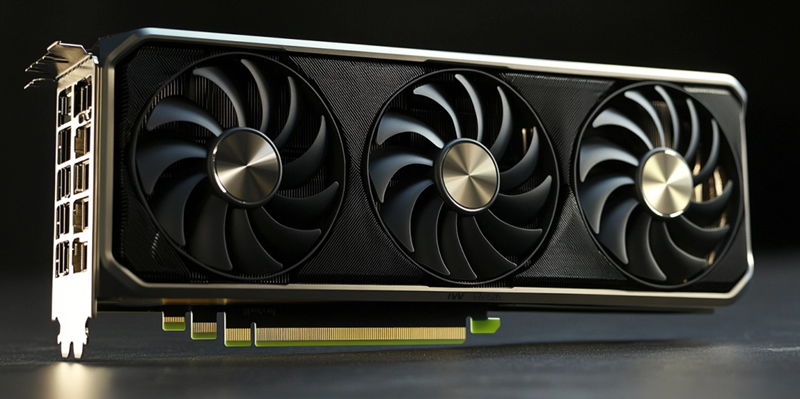Nvidia has always been a trailblazer in the GPU market, setting trends and consistently pushing technological boundaries to new heights. Recently, the tech community has been abuzz with a deluge of rumors surrounding Nvidia’s next-generation Blackwell series GPUs. While initial speculations focused on high-end models such as the RTX 5090 and RTX 5080, recent reports have expanded to include mid-range models like the RTX 5070 and RTX 5060. In light of these rumors, it’s crucial to examine Nvidia’s potential market strategies that may be underpinning these developments, as well as the feasibility of such an aggressive rollout.
Initial Focus on High-End Models
The buzz around Nvidia’s new GPUs initially centered on their flagship models. The RTX 5090 and RTX 5080 are expected to showcase cutting-edge technology and performance enhancements that set new standards in the industry. These GPUs are anticipated to be unveiled at CES, a platform Nvidia has historically used for big announcements.
Flagship models like these are not just about raw power; they set the tone for the entire product line. These high-end GPUs usually incorporate the newest architecture and technology, which trickles down to more affordable models over time. The initial excitement surrounding the RTX 5090 and 5080 isn’t surprising given the potential they hold for gamers and professionals alike.
However, what has surprised many is the breadth of the rumored lineup. It’s not just the top-tier GPUs that are making waves; mid-range options are now part of the conversation too. This expansion has ignited both excitement and skepticism within the tech community.
Emergence of Mid-Range GPUs
A sudden shift in rumors has brought attention to mid-range GPUs like the RTX 5070 and RTX 5060. This unexpected development suggests an expanded rollout strategy that targets a broader audience. While high-end GPUs capture headlines, mid-range models are crucial for Nvidia’s market share, as they appeal to a larger segment of consumers.
The RTX 5070 and 5060 are expected to carry significant performance improvements over their predecessors. These mid-range GPUs could serve as a sweet spot for both casual gamers and enthusiasts looking for solid performance without breaking the bank. The inclusion of variants like the RTX 5070 Ti and 5060 Ti only adds more fuel to the fire, indicating potential VRAM configurations that could cater to different needs.
Such a sudden inclusion of mid-range models suggests a strategic pivot by Nvidia. This move could be designed to counterbalance the offerings from competitors like AMD, who are also preparing to launch new GPUs. By diversifying the product lineup, Nvidia aims to secure its foothold across various market segments.
Skepticism About Rapid Release
The rapid release timeline outlined in the rumors has met with significant skepticism. Historically, Nvidia has followed a more measured approach to launching new GPUs, spreading releases over several months rather than cramming them into a single quarter. The proposed timeline suggests the RTX 5090 and 5080 would launch in January, followed by the RTX 5070 and its Ti variant in February, and finally, the RTX 5060 and its Ti version in March.
Industry analysts question the feasibility of this aggressive timeline. Nailing down supply chains, production schedules, and marketing strategies for such a swift rollout would be an enormous undertaking. Nvidia’s past patterns do not support the idea of such a rapid sequence, leading many to believe that the rumors could be overstated or misinformed.
One potential explanation for this accelerated timeline could be a mix-up between desktop and mobile GPU plans. Mobile GPUs often follow different schedules and might be easier to release in quick succession. If the timeline pertains to mobile versions, the rapid pace might make more sense.
Strategic Considerations
If Nvidia were to follow through with this rapid release schedule, it could signify an aggressive market strategy aimed at outpacing competitors. AMD’s RDNA 4 GPUs are slated for a Q1 2025 release, which could pose a significant threat to Nvidia’s market position. By launching a comprehensive lineup of Blackwell GPUs in quick succession, Nvidia could preemptively strike against AMD’s offerings.
Such a strategy would demonstrate Nvidia’s commitment to maintaining its leadership in the GPU market. Rapidly rolling out both flagship and mid-range models could help absorb market demand and weaken competitors’ influence. The variety in VRAM configurations, especially the debated 12GB vs. 18GB for the RTX 5070, speaks to Nvidia’s effort to tailor their products to diverse user needs.
However, pursuing this route comes with risks. A rushed rollout could lead to supply shortages, potential quality control issues, and market confusion. The gamble is high, but so is the reward if Nvidia manages to pull it off seamlessly.
Balancing Hype with Reality
Nvidia has long been a leader in the GPU market, consistently setting trends and pushing technological boundaries. Recently, the tech community has been buzzing with rumors about Nvidia’s next-generation Blackwell series GPUs. Initial speculations focused on high-end models like the RTX 5090 and RTX 5080, but recent reports have broadened to include mid-range models such as the RTX 5070 and RTX 5060. This expansion of focus has many considering Nvidia’s potential market strategies and whether such an ambitious rollout is feasible.
Nvidia’s reputation for innovation is well-established, and the company’s ability to continuously push the envelope in GPU performance has made them a mainstay in the gaming and professional graphics sectors. The Blackwell series rumors suggest Nvidia is preparing to offer a wider range of options to meet various consumer needs, from hardcore gamers to budget-conscious users. Such a move could solidify their market dominance and address different segments more effectively. It’s crucial to consider the implications of these developments and how they may shape the future of GPU technology.

